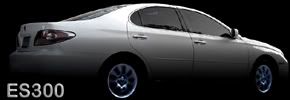The riser-to-floor-pan dimensions and structure of automotive seats (especially in the Toyota, Honda, Nissan, etc...) vehicles is a very complex relationship. Today's cars are NOT an assortment of arbitrary components that function as "island" parts by themselves, and ANY modification, removal, etc... can pose some risks that should be considered.
SWS = Seat Weight Sensor electronic devices
SPS = Seat Position Sensor electronic devices
OPDS = Occupant Detection Systems (incorporated into small film transducers or pressure sensor arrays between the foam pad and trim covers...)
Seat Heater elements
...and even AVS (Air Ventilation Systems)
Many MANY of today's modern cars have NUMEROUS components that are INTEGRATED into the SEAT ECU (or ECM) and communicate information to/from and between multiple components, including airbag deployment IC's and such... NOT to mention the power units, recline, lift, and lumbar mechanisms... and even AHR (Active Head Rest) mechanisms.
Honestly, being MORE than familiar with automotive seating industry, I'd say you should be careful when "tampering" with your automotive seats. It's not just about changing the position for your COMFORT, but the NTHSA (National Highway Traffic Safety Administration), IIHS (Insurance Institute for Highway Safety) and DIN (Deutsches Institut fur Normung) all have carefully MANDATED regulatory, safety, and strength requirements that are CAREFULLY ENGINEERED into the VERY SPECIFIC position, attitude, and specific energy absorbing structures of every component in an automobile, such as the seat system. ANY deviation from the AS SHIPPED condition, and you may end up looking like the crash-test-dummy that WASN'T properly secured during a sled impact test session...

...even in a minor incident.

Anyway... not to belabor the point, but I'd err on the side of SAFETY on this one, as you won't find many more versed SG'ers in here on this topic than me.

G/L!
-crisp















